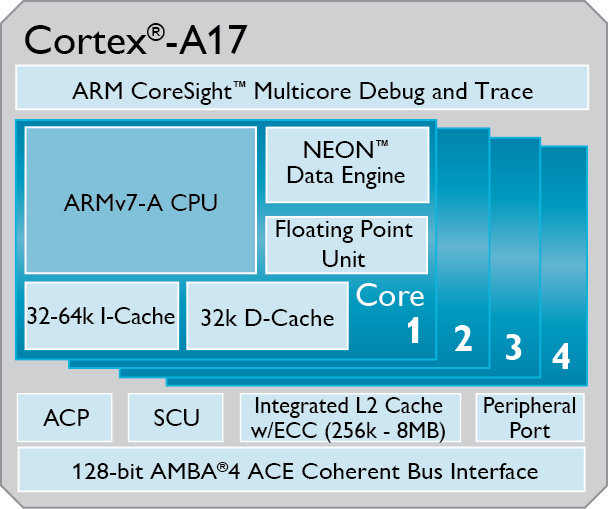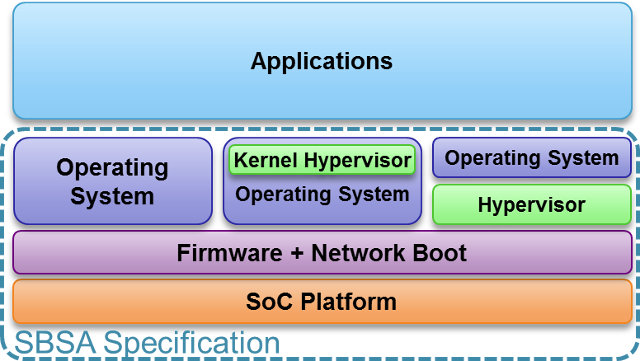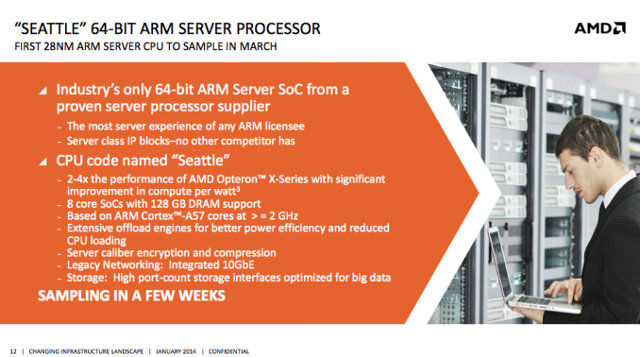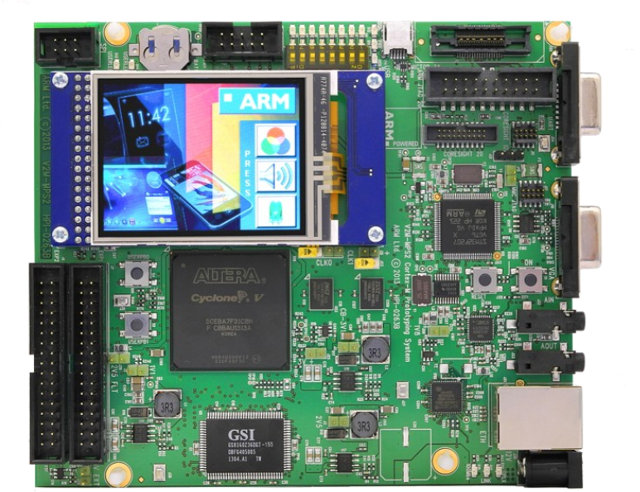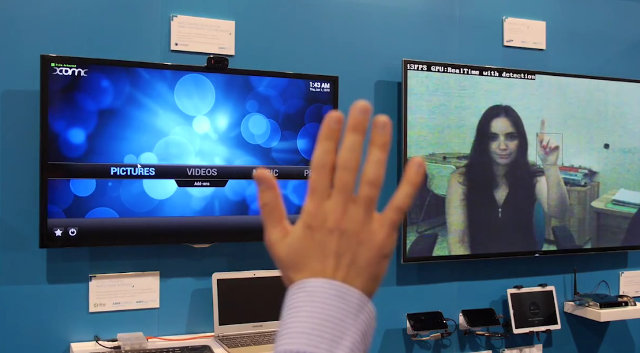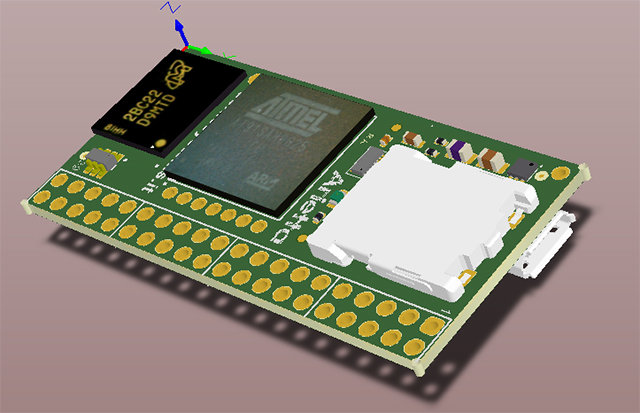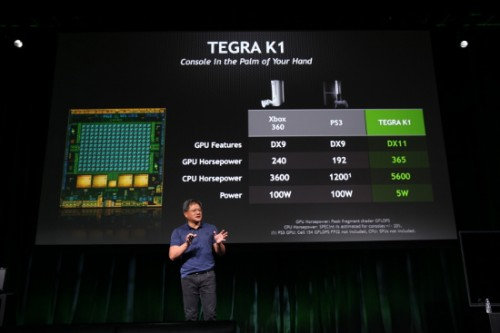Finally all these ARM Cortex A17 marketing materials for Rockchip RK3288 were not some typos, but Rockchip marketing team may just have not received the memo reading “Confidential”, as ARM has now officially announced Cortex A17 processor based on ARMv7-A architecture, with support for big.LITTLE with Cortex A7, and that can be coupled with Mali-T720 mid-range GPU and Mali-V500 VPU. After Cortex A15, and Cortex A12, you may wonder “Why? But Why did ARM had to launch yet another new core?”. Here’s the company answer to that question: The Cortex-A17 processor offers 60% performance uplift over the Cortex-A9 processor, the current leader in mid-range mobile market, and betters the best efficiency enabling optimized solutions to address existing and new products. The Cortex-A17 processor is based on the popular ARMv7-A architecture, today’s most successful architecture in the mobile market. With over 1M apps supporting the ARMv7-A architecture, the Cortex-A17 processor is […]
Cute Embedded Nonsense Hacks, Nouveau Driver for Tegra K1, and Android Defaults to ART
There’s been some news at the end of this week that may not warrant a full article, but are still fun and/or interesting nonetheless: comments by the lead developer of Fedora ARM led to “Cute Embedded Nonsense” meme on Google+, preliminary commit for open source drivers for Tegra K1’s GPU, and Android Open Source Project defaults to ART instead of Dalvik. If you have a Google+ account, and circled a few people involved in ARM Linux, you must have seen a few postings about “Cute Embedded Nonsense Hacks” in your feed. It all started when Jon Masters posted about Red Hat’s ARM SBSA platform requirements, and in particular one comment that reads: I am all for people installing their own kernels if they want to. I support aggressively defined standard platforms (not cute embedded nonsense hacks) but not locked platforms. You can keep both parts when it breaks, of course. […]
ARM Unveils Server Base System Architecture Specification (SBSA) to Standardize ARM based Servers
64-bit ARM based servers should hit the market later this year or earlier in 2015 with SoCs such as Applied Micro X-Gene or AMD Opteron A1100. ARM still has the lead in terms of efficiency with a lower dollar per watt ratio, but Intel is closing in with their new Avoton server-on-chips. However, there’s one aspect where Intel is clearly in the lead: standardization and compatibility. ARM is very flexible, and allow SoC designers to create more or less what they want, but it comes at the cost that most ARM based systems are not capable of running mainline Linux, and instead use vendor trees. With many applications, that may not be critical, but when it comes to data-centers, companies want to be able to run the latest Linux version with the latest security patches as soon as possible, and want to lower the total cost of ownership (TCO), so […]
AMD Opteron A1100 Server SoCs Feature 4 to 8 ARM Cortex A57 Cores
A few months ago, AMD published a roadmap showing AMD “Seattle” Server CPUs based on ARMv8 64-bit architecture were planned for H2 Q2014. The company has now announced the first series of processors that will be based on ARM Cortex A57: AMD Opteron A1100 Series, as well as the corresponding development platform at the Open Compute Project Summit in San Jose, California. Key features of AMD Opteron A1100 Series processors: 4 or 8 core ARM Corte-A57 processors Up to 4 MB of shared L2 and 8 MB of shared L3 cache Configurable dual DDR3 or DDR4 memory channels with ECC at up to 1866 MT/second Up to 4 SODIMM, UDIMM or RDIMMs 8x lanes of PCI-Express Gen 3 I/O 8x Serial ATA 3 ports 2x 10 Gigabit Ethernet ports ARM TrustZone technology for enhanced security Crypto and data compression co-processors On the software side, the company mentionned it is a […]
ARM Unveils Cortex-M Prototyping System Based on Altera Cyclone V FPGA
Before micro-controllers or processors are manufactured, simulation is performed in (usually) expensive boards based on FPGA chips from Altera or Xilinx, and once designers have found the system to work as expected, they can move to the next phase and work on the actual silicon. ARM has just released V2M-MPS2 Cortex-M Prototyping System for MCU / SoC / ASIC designers working on Cortex-M processors. Key features: Altera Cyclone V FPGA with ~150K LE 4x 2MB ZBTRAM (32-bit each, with two of them forming a 64-bit memory). ZBT = Zero Bus Latency 16MB PSRAM (16-bit) Touch screen LCD module Range of hardware interfaces – UART, VGA (4 bit per color), SPI, audio (I2S), Ethernet, LEDs, buttons I/O expansion ports (GPIO) FPGA images for Cortex-M processors Example project for Cortex-M0 DesignStart (processor IP has to be licensed separately) USB connection for downloading FPGA images and program image to micro SD card on board […]
ARM Mali GPU Demos at CES 2014 – 4K 3D UI and Games, ASTC Texture Compression, XBMC + Gesture Recognition, and HEVC Video Decoding
Phill Smith, Demo Manager at ARM, has filmed and uploaded four very interesting demos of what new features will be possible thanks to new generation ARM Mali-450 and Mali-T6xx GPUs including 4K 3D user interfaces and games, ASTC texture compression, and OpenCL accelerated gesture recognition and HEVC / H.265 video decoding. 4K Resolution 3D User Interface and Game Demo The first demo showcases a Geniatech box (ATV1800?) powered by AMLogic AML8726-M8 featuring an ARM Mali-450MP6 GPU running Android with a user 4K 3D interface designed by Autodesk using Scaleform UI. The rest of the video shows Timbuku 3D gaming demo running at 3840×2160 (4K2K) @ 24 fps. The frame rate appears to be low, but that’s because the box is using HDMI 1.4, which limits UHD output to 24fps. 2160p60 is only available via HDMI 2.0. ASTC Compression Demo on Samsung Galaxy Note 3 3D Textures are getting bigger and […]
9.99 Euros Arietta G25 Board Features Atmel SAM9G25 (ARM9) Processor
Acme Systems Aria G25 is a tiny system-on-module (SoM) based on Atmel SAM9G25 that sells for as low as 24 Euros. The company is now working on an smaller and lower cost ARM Linux module based on the same processor called Arietta G25. The board targets the hobbyist market and IoT (Internet of Things) applications. Arietta G25 specifications: CPU – Atmel AT91SAM9G25 ARM9 @ 400Mhz System Memory – 128 MB DDR2 Storage – MicroSD Socket for up to 32GB bootable Linux microSD (not included) I/Os and other available pins (via 2.54mm though holes): USB – 1x USB 2.0 host/device (High Speed), 1x USB 2.0 host(HS), 1x USB 2.0 host (FS) Serial – 1x UART (RXD,TXD,RTS,CTS), 1x I2C, 1x SPI bus 1 with 2 chip select (5 to 50 MHz) 4x PWM 4x 10-bit A/D converters 1-wire bus 5V, 3.3V, GND, VBATT signals Header for Wi-Fi module Power – Single 3.3 […]
NVidia Announces Tegra K1 32-bit & 64-bit SoCs with a 192 Core Kepler GPU
Nvidia announced their newest mobile SoC at CES 2014, but instead of calling it Tegra 5, they went for Tegra K1, as it’s the first to feature a 192 cores GPU based on Kepler architecture, the same as used in PC graphics card. There will be several version of the chip one based on four Cortex A15 cores, one featuring a dual core Nvidia Denver CPU based on ARMv8 64-bit architecture, and Tegra K1 VCM for the automotive market. The company showcased the power of their new processor with an Unreal Engine 4 demo and the same face demo showed last year on an Nvidia GPU card, and Tegra K1 easily outperform older generations games console such as Xbox 360 and PlayStation 3, at and the same time consume just about 5 Watts of power, versus 100 Watts for Microsoft and Sony consoles. The GPU in the Tegra K1 also […]


